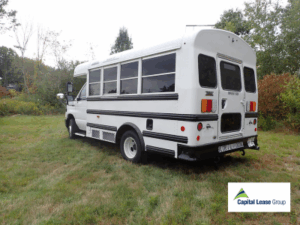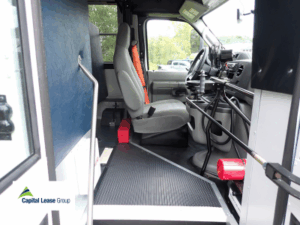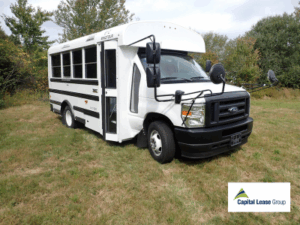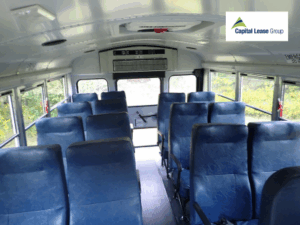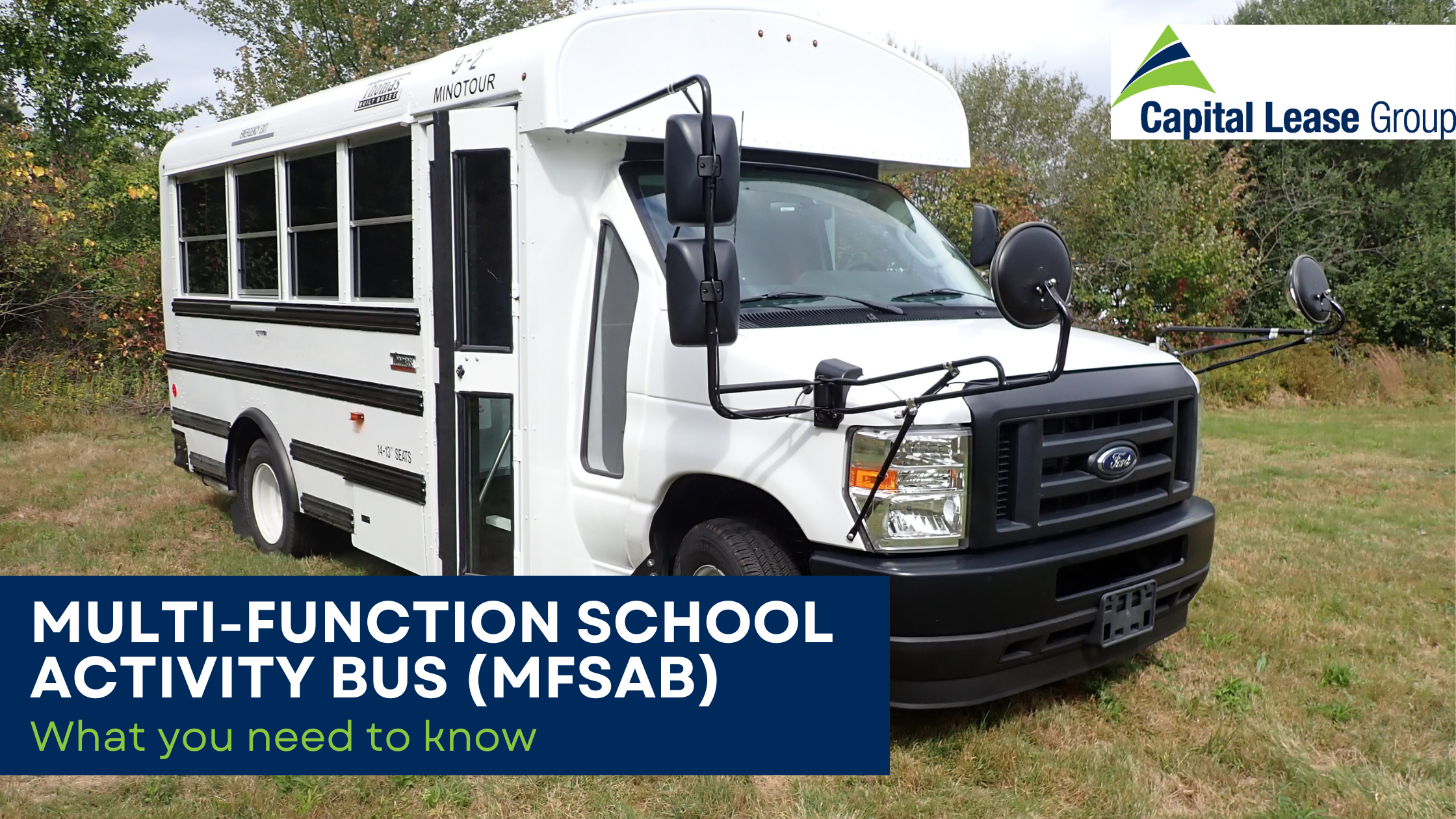Understanding Multi-Function School Activity Buses (MFSABs): What Administrators Need to Know
When it comes to student transportation, administrators are constantly balancing safety, compliance, and cost. One vehicle option that often raises questions is the Multi-Function School Activity Bus (MFSAB).
At Capital Lease Group, we work with schools and organizations across New England and the U.S. who rely on accessible and compliant vehicles. This post explains what makes an MFSAB different from a traditional school bus, why it exists, and what you need to know before putting one into service.
The photo above, and the other photos in this blog post, are all from a new Multi-Function School Active Bus that Capital Lease Group provided to a customer recently.
MFSABs are Built for Safety
MFSABs are designed with the same reinforced safety features as a full-size yellow school bus:
- Compartmentalized seating with energy-absorbing seat backs.
- Crash-tested roof strength and rollover protection.
- Fuel system integrity to minimize fire risk after a collision.
The main differences? MFSABs are not painted yellow and do not have stop arms or flashing red lights. Because they aren’t intended to load/ unload students on public roadways, they don’t need traffic control features.
When You Can Use an MFSAB
MFSABs are designed for school-related activities, not daily routes.
Approved uses include:
- Field trips
- Athletic events
- Extracurricular and after-school programs
They are not approved for:
- Fixed-route service between home and school
- Neighborhood bus stop pick-ups and drop-offs
This distinction is important: the absence of stop arms and flashing lights means these buses are only legal and safe in controlled loading/unloading environments.
Meeting Safety Standards
Administrators can assure families that MFSABs are just as safe in a crash as a school bus.
- They meet nearly all Federal Motor Vehicle Safety Standards (FMVSS) required for school buses.
- The exceptions are the traffic-control devices (lights and stop arms) that aren’t necessary for activity trips.
This makes MFSABs a safer and more compliant option than standard 12- or 15-passenger vans or shuttle buses, which do not meet federal crash standards for student transport.
Who Can Drive an MFSAB?
One of the most common questions is about driver licensing. The answer depends on where you are and the size of the bus.
- In Massachusetts: A driver can operate an MFSAB with a standard Class D license, as long as they complete any required school or district training (safety videos, behind-the-wheel practice, background checks, and medical clearance).
- Across the U.S.:
- A Commercial Driver’s License (CDL) with a passenger endorsement is required if the bus seats 15 or more passengers or exceeds certain weight limits.
- Some states (like Vermont) issue an MFSAB-specific endorsement.
- Others (like South Carolina) require a School Bus Driver’s Certificate for anyone transporting public school students.
Takeaway: Always check your state DMV regulations, but for most smaller-capacity MFSABs, a standard license with training is sufficient.
Why Districts Choose MFSABs
So why should administrators consider adding MFSABs to their fleets?
- Student Safety: Built to school bus standards, unlike passenger vans.
- Flexibility: A cost-effective option for small groups traveling to activities.
- Compliance: Keeps districts aligned with federal and state regulations.
- Right-Sizing the Fleet: Avoids running large buses for small extracurricular trips.
Final Thoughts
An MFSAB is a smart solution for schools that need safe, compliant transportation outside of daily routes. While they look a little different from traditional school buses, they offer the same level of crash protection and are designed specifically for activity-based student travel.
At CLG, we help districts and organizations across New England build and manage fleets that are safe, compliant, and cost-effective. If you’re considering MFSABs for your school, we’d be happy to walk you through the options and requirements in your state. Contact us for help!
For further reading, check out the official Federal Register definition of MFSAB and NHTSA school bus safety FAQs.
